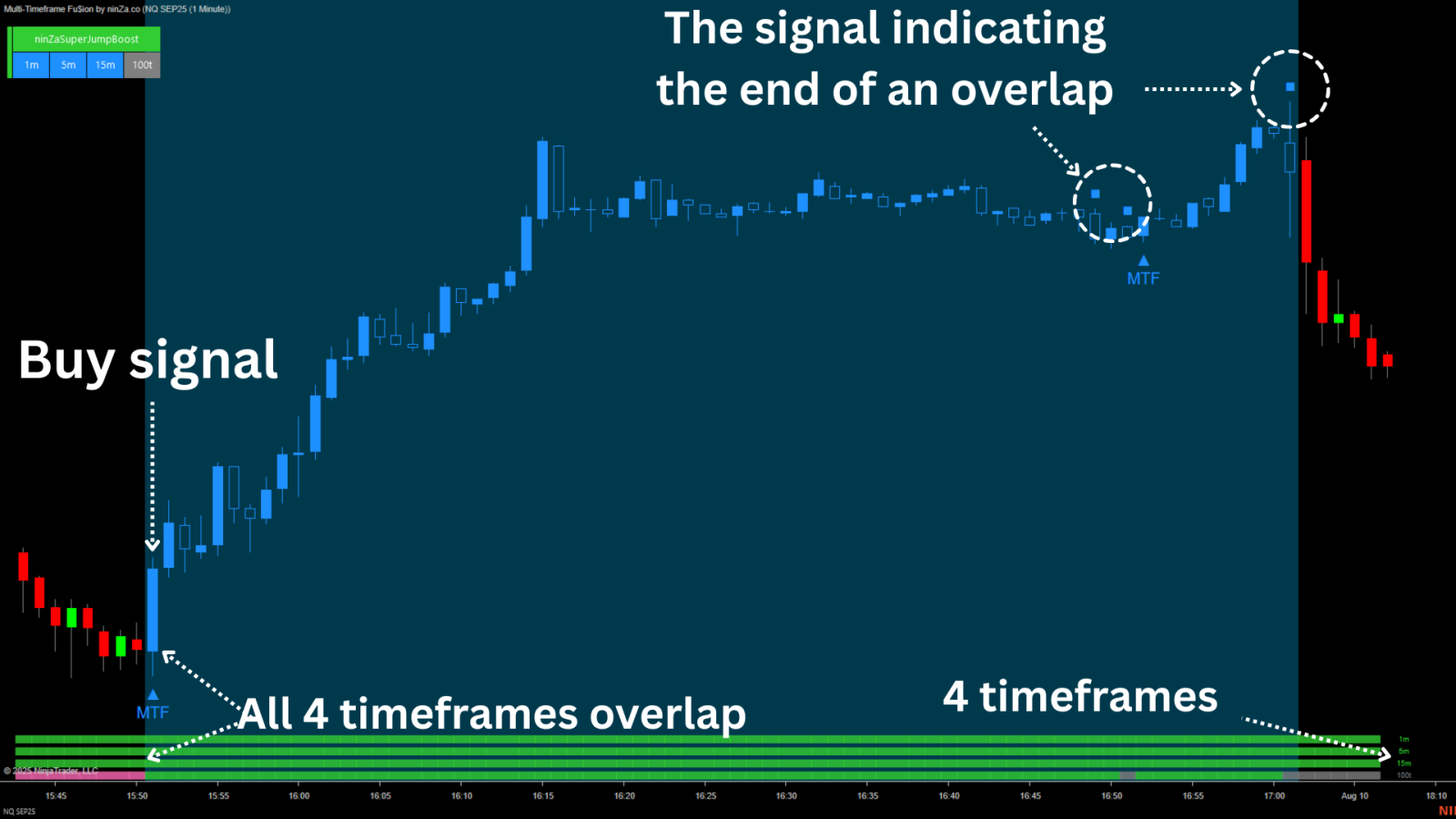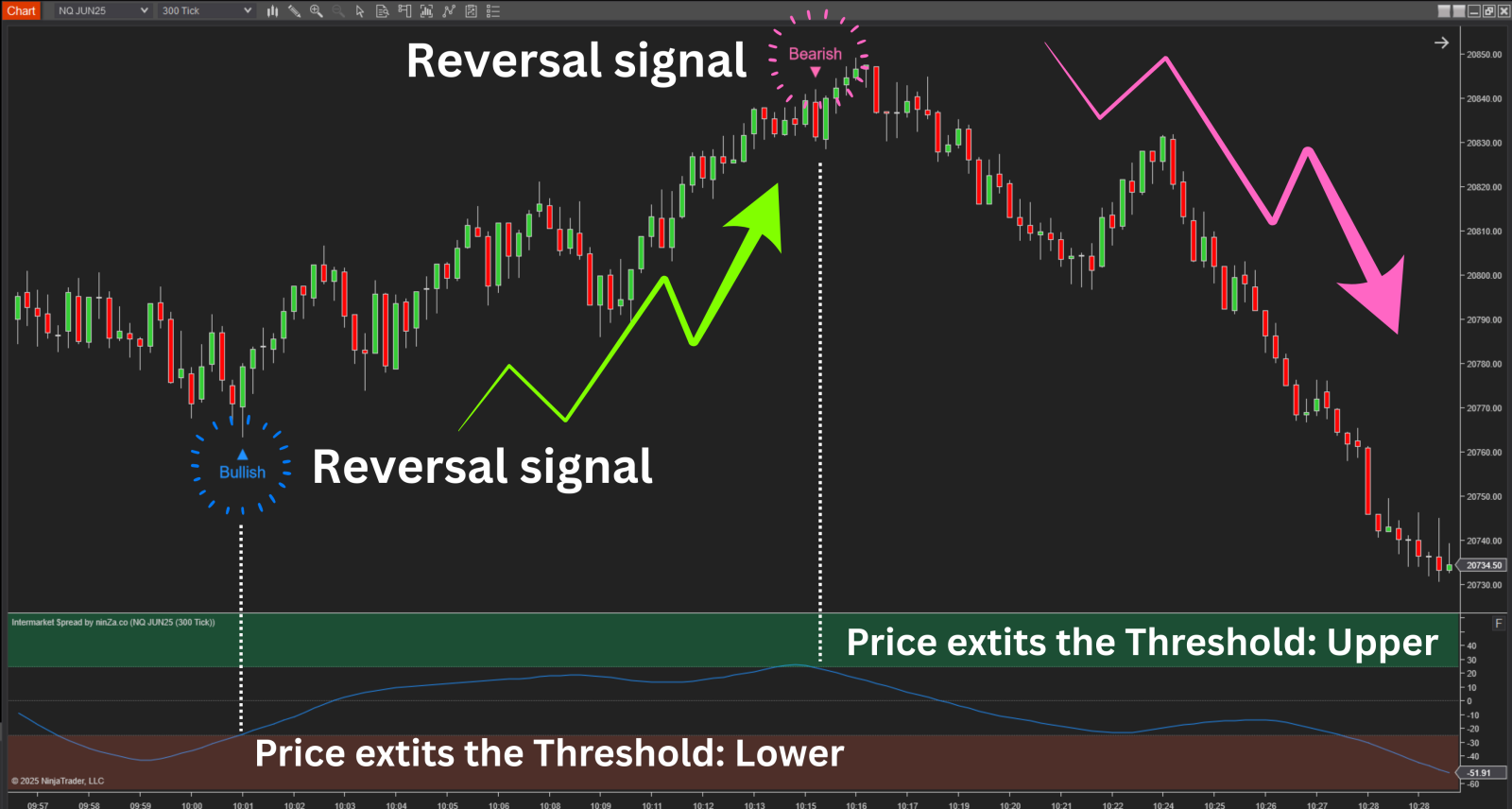"If you look at the market from only one timeframe, you’re missing half the story"
Multi-timeframe analysis is mandatory for pro traders
It blends the big picture from higher timeframes with precision from lower ones to boost decision accuracy
1. Advantages
See the big picture – Avoid trading against the dominant trend
Higher win probability – Enter when signals align with the higher TF trend
Optimize entries/exits – Lower TFs fine-tune timing and reduce stops
Noise reduction – Filter out single-TF false signals
2. Disadvantages & challenges
Time-consuming manual work – Opening 3–5 charts clutters the screen
Hard to sync signals – Different TFs may conflict, causing hesitation
Info overload – Too much data leads to analysis paralysis
Lack of broader confirmation – Focusing on one market may give weak signals
3. ninZa.co solutions
Multi-Timeframe Fu$ion – Solving sync & speed issues

Signal mechanism: Pulls signals from 5 TFs of a chosen indicator, displays them on 1 chart, highlights consensus when all TFs align
How to use:
Pick base indicator
Select 5 TFs
Watch highlighted zones for entries
Fixes challenges:
No need for multiple charts → less clutter, faster workflow
Automatic consensus alerts → removes hesitation
Benefit: Fast, clear multi-TF synchronization
Link: Best NinjaTrader Multi Time Frame Indicator - ninZa.co
Intermarket $pread – Solving broader market confirmation

Signal mechanism: Tracks 2+ instruments across multiple TFs to find consensus or divergence
How to use:
Choose related instruments (e.g., NQ – ES – YM)
Assign TFs
Use spread chart for confirmation
Fixes challenges:
Benefit: Validates reversal signals, avoids being fooled by local moves
Link: Intermarket $pread: Top NinjaTrader Multi Time Frame Strategy
4. Final thought
Multi-timeframe analysis offers huge advantages but also real challenges
With Multi-Timeframe Fu$ion and Intermarket $pread, you shorten analysis time, remove TF conflicts, and boost the certainty of your trades